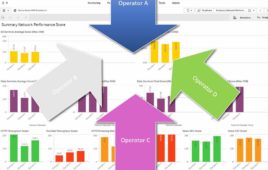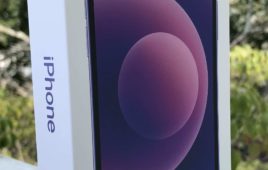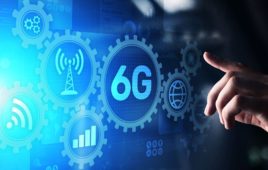Verizon issued the latest salvo in the gigabit LTE wars this week, reporting speeds only a hair shy of the 1 Gbps mark in real-world tests with Ericsson and Qualcomm.
The carrier on Tuesday said it hit 953 Mbps in a joint commercial network deployment in Boca Raton, Fla., that utilized Licensed Assisted Access (LAA) technology. Alongside LAA, Verizon reported its use of four carrier aggregation, 4×4 MIMO, and 256-QAM to hit the near-gigabit mark. Verizon claimed the figure is the “fastest announced speed achieved in a real-world, dynamic network environment” using LAA technology.
“Today’s milestone is a great example of our approach to new technology – we deploy the latest capabilities reliably and in real-world environments, not just in a lab,” Verizon’s Chief Wireless Network Officer Nicola Palmer commented. “By continuing to deploy the latest technologies on our 4G LTE Advanced network, we pave the way for better and faster performance for the things our customers do now, and provide the groundwork for our future advancements.”
Verizon said the demonstration used all commercially available network components, spanning a cell site, hardware, software, and backhaul. Ericsson contributed its Radio 2205 for the LAA component of the test, while Qualcomm pitched in with a Snapdragon 835 mobile platform-based test device.
Verizon said it has been “aggressively” deploying new technologies on its network in the quest for gigabit speeds, and a spokeswoman noted engineers will be working in the fourth quarter and early 2018 to make peak speeds – via LAA with four carrier aggregation – more widely available. The carrier has already deployed 4×4 MIMO in 83 percent of markets, she added.
Last summer, Verizon launched two-channel carrier aggregation nationally, and noted it has now also completed deployments of three-channel carrier aggregation using its licensed spectrum. Several devices on the market can already support gigabit speeds, the carrier noted.
The news follows announcements of gigabit LTE work from all three of Verizon’s major rivals.
Back in March, Sprint demonstrated speeds well above 600 Mbps at a New Orleans sports arena using 4×4 MIMO, 256-QWAM, and three-channel carrier aggregation on licensed spectrum. In an update last month, Sprint CTO John Saw indicated the carrier is headed for four carrier aggregation as well as massive MIMO deployments next year in its quest to hit the gigabit mark.
In June, both AT&T and T-Mobile surpassed 750 Mbps in their own gigabit tests utilizing four-channel carrier aggregation and LAA in California.
T-Mobile said it’s already launched LTE-Unlicensed (LTE-U) technology in six cities across the country, but indicated it plans to further densify its network with small cells that include LAA functionality starting later this year.
AT&T reported in June it has already activated 256-QAM and 4×4 MIMO in a “significant part” of its network, and is “actively testing” four-channel carrier aggregation now with plans to deploy the technology in the second half of the year. AT&T’s VP of RAN and Device Design Gordon Mansfield told Wireless Week four carrier aggregation capabilities are on track to start showing up in handsets in the “near future.”




